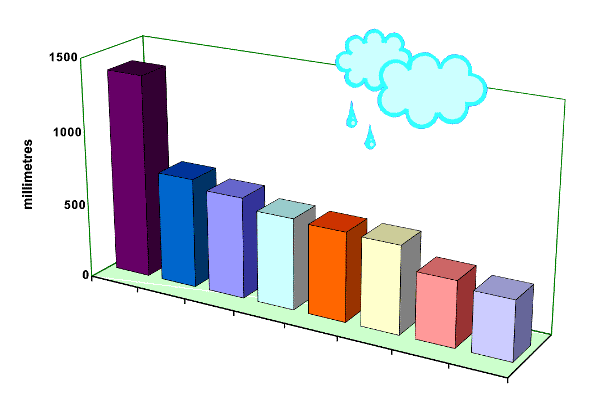Europe has a temperate maritime climate this is brought about by a prevailing westerly wind from across the Atlantic Ocean.
Known as the Polar Jet Stream it also brings the warm currents of the Gulf Stream and keeps Europe's climate moderately warmer than other areas of similar latitudes.
These maritime winds bring warm, wet weather which provides a long growing season across the European plains.

Climate data for capital cities:



